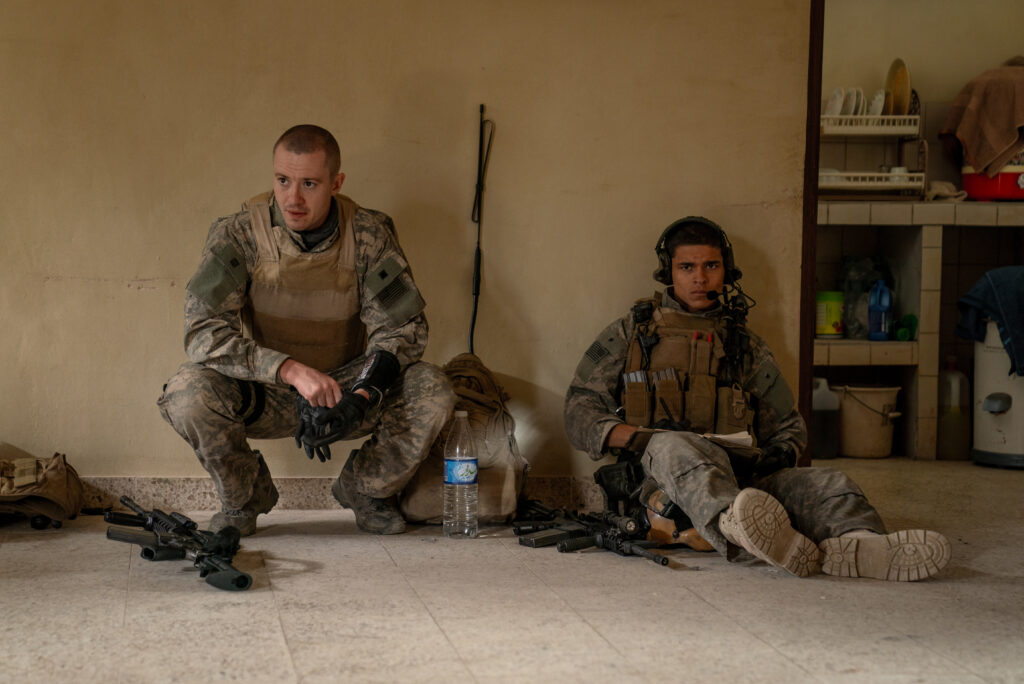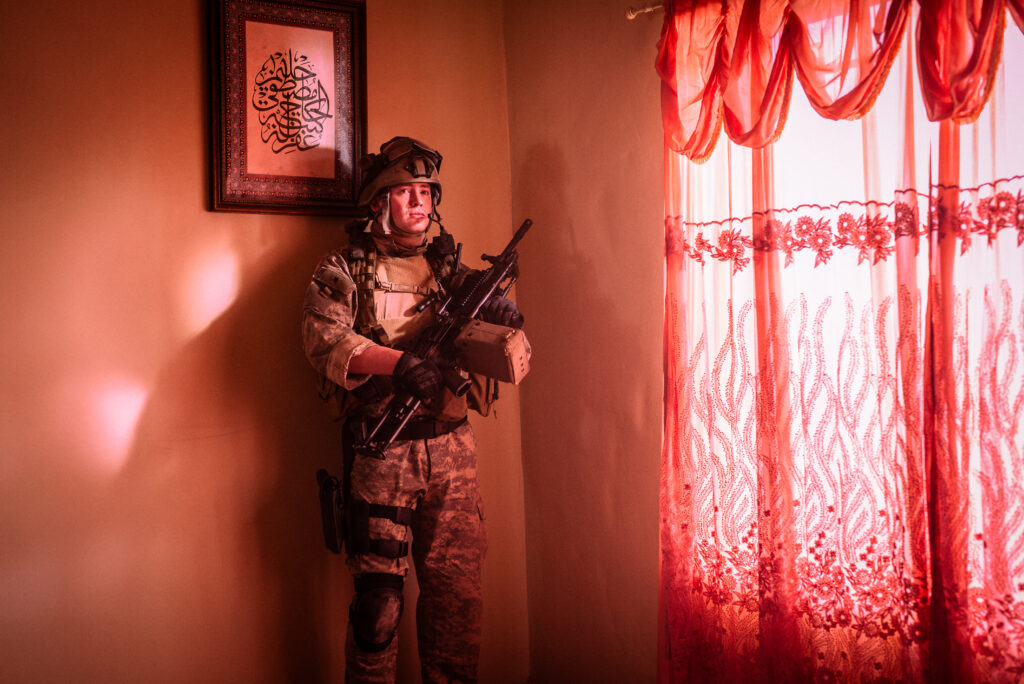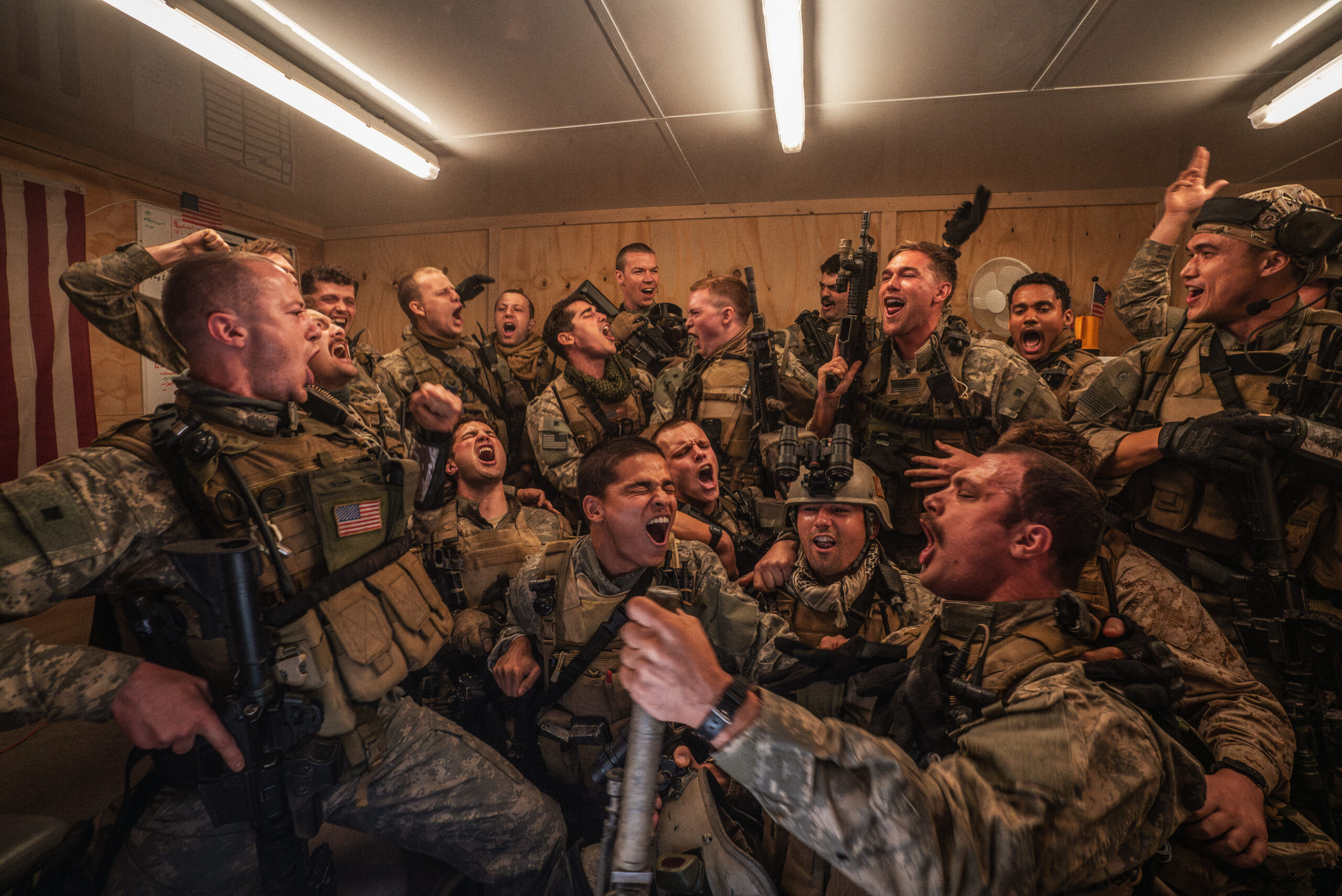Alex Garland’s latest film, Warfare, is a confounding experience to say the least. And that’s coming from somebody who found themselves completely bowled over by Civil War. The filmmaker has returned rather quickly to the war genre, releasing this basically a year after his previous feature. Though on this go around, he is joined by Ray Mendoza, an Iraq War veteran who shared both the writing and directing duties. Mendoza’s inclusion and impact on the film is certainly felt throughout. While it provides an interesting framework surrounding the visceral content and presentation within, it also feels like the dominant force behind why Warfare fails to leave much of an impact once the credits begin rolling. To be fair, there are several moments throughout that make quite an impact in an attempt to rattle audiences. It’s a film undoubtedly full of effective moments such as these. But the question ultimately remains as to whether or not this film is trying to interrogate the events that occurred during the 2006 mission Mendoza was on, which served as the entire foundation for Warfare, or if it was just an exercise in mining memory for something both cinematic and potent. The answer as to what Warfare is lies somewhere in between the grey areas of both.
Warfare is a film directly mined from the 20-year old memories of those who experienced the mission. As such, there’s much subjectivity to be pondered over in the images and moments that make up the film. That presents an interesting quandary for both a filmmaker and for an audience. If we know the sequences we’re viewing are formed from retrospective readings of the past, is the meaning they hold already set in stone? As audience members, we’re often projecting our thoughts and ideas about the world onto the images passed onto us through a filmmaker. That filmmaker has their own set of ideas about their film, which informs the decisions they ultimately end up making. In the case of this film, there’s now an additional barrier to either examine, break through, or look beyond. And what happens when each half of the filmmaking duo seems to be negating the other? In some instances, it makes for an experience that’s exciting to engage with. But it also leaves much to be desired with regards to what this film genuinely wants to achieve. Warfare operates like a thematic see-saw because of Garland’s and Mendoza’s halved involvement.

On the more interesting end of the spectrum, Warfare is a film made up of hyper-specific moments. Take the opening sequence, which jarringly and playfully utilizes Eric Prydz’ infamous “Call on Me” music video. It’s an instant time capsule for those familiar with the video, and it speaks to the ability that memory has to transport anybody years into the past. In an instant, we’re in 2006. We’re rapidly shown the key characters who will be the foundation around which Warfare is designed. The cast is exclusively made up of young actors who are either on the precipice of, or have already been fully embraced in, complete stardom. They’ve been affectionately promoted in marketing materials and amongst Twitter stan accounts as the Internet’s boyfriends. It may feel strange when linked to a war film as disturbing as this one, but I’d argue that observation works in favor of the film’s anti-war sentiments. The opening of the film immediately exclaims one singular fact: these are young adults who barely have any idea about the world around them. And over the course of 90 or so real-time minutes, we see the stark realities of their lives dawning on each of them.
How Garland and Mendoza capture this experience is what makes Warfare an interesting experiment in patience. Now 20 years removed from the harrowing experience, one gets the sense that these soldiers understand a bit more about how their experiences affected their psyches. Take Elliott (Cosmo Jarvis), who initially finds himself prone, staring at the outside world through a sniper scope. It’s unclear just how long he’s been in that single spot, but one can imagine based on his need to stretch that it’s been some time. Garland frames much of his viewpoint directly through the sights of a crosshair, which raises the frightening idea about what that does to a psyche. The same can be said for Ray (D’Pharaoh Woon-A-Tai), who only appears to know the vicinity around him through codenames and aerial recon imagery. It’s as if the only way this group of soldiers can operate in the world around them is through the mandated training and protocols they’ve been provided with. As tensions rise due to the possibility of a mounted attack on the home they have forcefully commandeered as a base of operations, the lulls of Warfare become heightened sequences of tension before anything even really occurs.

Both before and after the most visceral moments of Warfare are experienced, much of the film is all about patience. As an audience member, we’re just waiting for something to go wrong; The same goes for these soldiers. There’s a complete lack of control, and framed through Garland’s direction, the alienation these soldiers feel is palpable. It’s when Warfare is at its most interesting: When Garland appears to be directly challenging the jingoism most commonly found in war films of a similar vein. One brash soldier indicative of the mindset of early 2000s patriotism is quickly shamed and belittled. In Warfare, when all hell breaks loose, any notion of that patriotism and purpose is replaced with the confounding question of why any of this could, should, or would be happening. It’s all in the performances of this young cast. Each character is seemingly incapable of fully grappling with everything occurring to them.
Tommy (Kit Connor) is deeply overwhelmed. The initial chaotic scramble shakes him deeply, and from there, Connor plays the remainder of the film with a harrowing veil cast over his presence. It’s as if he’s shut down entirely, and Warfare excels in the moments that little focus is trained on him. This being a rather large ensemble, there are countless moments for a handful of the actors to shed their persona of beloved and charming actor for something much more grim. Will Poulter, most known for his smarmy Midsommar performance or his hysterical turn in We’re the Millers, goes from noble leader to broken child. The second half of the film turns him borderline catatonic and essentially removes his presence from the film. Stranger Things highlight and soon-to-be Johnny Storm, Joseph Quinn, spends the entirety of the film in a role that’s likely to be looked over by many, but the haunting response it mines out of most audience members is palpable and bone-chilling. Its defined choices such as these that make this film feel as defined as it can be. There’s just several moments that brush directly against the anti-war sentiment permeating throughout that throw the entire film into question. In the end, Warfare is a very well made film. It’s shot with a clinical precision, and has plenty of ideas from Garland flowing through it that we’ve come to expect. But it’s also a confounding film in what Mendoza brings to the fold, premise and tone aside. Warfare feels like a technically marvelous curio of 2025 more than anything. Still, it’s likely to be a benchmark in production design for the year, and speaks to what a filmmaker can achieve when working within the most barebones of parameters. With nothing but a small house, a closed set of a few blocks, and a handful of actors, Warfare succeeds in transporting its audience to a nightmarish memory.
